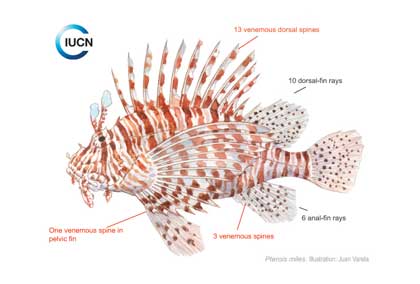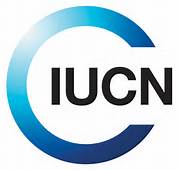New Lionfish Sightings in Turkey and Cyprus Marine Protected Areas

 The International Union for the Conservation of Nature (UICN), under the comprehensive MedMIS plan to combat invasive species in Marine Protected Areas (MPAs) of the Mediterranean, has confirmed new sightings in Turkey and Cyprus of a highly potential invasive species: ‘Pterois miles’ also known as the lionfish Devil firefish. Away from the Mediterranean, the species has proved to be an aggressive invasive fish that has expanded in a gradual and spectacular manner on the eastern coasts of the United States and the Caribbean.
The International Union for the Conservation of Nature (UICN), under the comprehensive MedMIS plan to combat invasive species in Marine Protected Areas (MPAs) of the Mediterranean, has confirmed new sightings in Turkey and Cyprus of a highly potential invasive species: ‘Pterois miles’ also known as the lionfish Devil firefish. Away from the Mediterranean, the species has proved to be an aggressive invasive fish that has expanded in a gradual and spectacular manner on the eastern coasts of the United States and the Caribbean.
The Marine Protected Areas of Kas-Kekova (Turkey) and Cape Greco (Cyprus) have been the locations where sightings have taken place for the lionfish, a species that has already caused serious economic and ecological problems in other parts of the world due to its voracity. The first lionfish specimen sighted in the Mediterranean was in the Bay of Haifa (Israel) in 1991. Ten years later, the species was newly sighted in the northern part of the Lebanon (2012) and in Cyprus (2013), a location confirmed by new findings in Turkey, which also included Iskenderum Bay (Turkey) and in Tunisian waters outside of protected areas. Dr Carlos Jiménez from ‘The Cyprus Institute’, marine biologist, claims that “this species could have a heavy negative impact on the ecosystems as well as on the local economies”.
Ecologically, the appearance of the lionfish also entails harmful effects to the native marine diversity. It is extremely aggressive and has the capacity to reduce the recruitment of juvenile fish and other species and could occasionally be at the top of the food chain. The ecological impact of the lionfish invasion can also include an increase in the growth of algae as there is a decrease of herviborous fishes, which, according to Dr Jiménez, can “attract the arrival of new invasive species because of the weakening of the local fauna and flora”.
Economically, the appearance of the lionfish can cause a serious impact on the local’s economy. Its presence in other areas has resulted in a reduction on the number of groupers and other commercial species, affecting the economies of the coastal fishing. The lionfish can also have an impact on artisanal fisheries and the nautical or diving tourism as it is highly toxic and its presence could inhibit tourists and divers alike. The lionfish sting should be treated as soon as possible as it can cause allergic reactions. On the other hand, some non-Mediterranean countries have begun to commercialize this fish as edible commercial species, which could be an alternative way, among other measures, to better control the populations.
About MedMIS:
The recent sightings are part of the comprehensive MedMIS plan, an online information system designed to keep track of invasive alien species in different Marine Protected Areas (MPAs) in the Mediterranean, since they are one of the biggest threats to the biodiversity of this unique ecosystem.
Thus, a large number of exotic fish species, mollusks, crustaceans and jellyfish became established in more than 180 marine protected areas distributed among 19 coastal countries. These exotic species locally threaten to displace the local flora and fauna and could hinder management efforts to maintain or restore their ecological integrity.
INTERNATIONAL UNION FOR CONSERVATION OF NATURE
The local collaborators of this initiative may report casual sighting through the online platform and by using the free mobile application for iOS and Android, thereby generating a dynamic map which will provide the exact location of the different species observed in the region and will help expand the information available on their distribution, spread and population density.
About the IUCN Centre for Mediterranean Cooperation
IUCN, International Union for Conservation of Nature, helps the world find pragmatic solutions to our most pressing environment and development challenges. IUCN is the world’s oldest and largest global environmental organization, with more than 1,300 government and NGO members and almost 13,000 volunteer experts in some 185 countries. IUCN’s work is supported by over 1,000 staff in 45 offices and hundreds of partners in public, NGO and private sectors around the world. The IUCN Centre for Mediterranean Cooperation was opened in October 2001 with the core support of the Spanish Ministry of Environment, the regional Government of Junta de Andalucía and the Spanish Agency for International Development Cooperation (AECID). The Centre’s mission is to influence, encourage and assist Mediterranean societies to conserve and use sustainably the natural resources of the region and work with IUCN members and cooperate with all other agencies that share the objectives of the IUCN. www.iucn.org/mediterranean ; IUCN on Facebook ; IUCN on Twitter

